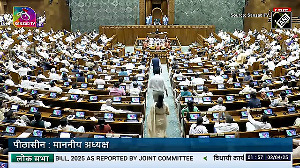Investors need to watch out for credit risk in the current environment. Even in short- and medium-duration funds, there could be a high level of credit risk. Investors must look up a fund’s style box and its portfolio to assess its risks.

When IL&FS bonds defaulted in September, the net asset values (NAV) of a number of liquid funds dropped by 5-6 per cent within a day. To make debt funds more robust, the Securities and Exchange Board of India (Sebi) is considering some proposals.
One such proposal is side-pocketing. Here, a separate fund is created and the distressed bonds are placed in it.
Investors are issued units of the secondary fund also, but they cannot sell them for a while.
“Side-pocketing is a good option because it helps to keep liquidity intact in the main portfolio, which remains healthy,” says Dwijendra Srivastava, chief investment officer, fixed income, Sundaram Mutual Fund.
When a default happens, some investors decide to exit even at a loss.
The fund manager has to sell good-quality, liquid papers to meet the redemption pressure, since selling the distressed bonds is impossible.
As a result, the concentration of poor-quality bonds in the portfolio rises.
Investors who stay behind are left holding a poorer-quality portfolio.
Side-pocketing gives existing investors the incentive to stay put.
“They know they alone will benefit if a part of the money is recovered from the bonds that have defaulted. They will not have to share it with new investors,” says Abhinav Angirish, managing director, Abchlor Investment Advisors.
Regulators, however, fear that allowing side-pocketing could lead to fund managers taking higher risks. Even in the US, side-pocketing is allowed only in hedge funds, not in mutual funds.
Lack of liquidity poses a big risk in India. Beyond government securities and AAA corporate bonds, the other bond categories are not liquid.
When investors hit the redemption button in times of panic, liquidity declines dramatically.
“In the Indian context, where secondary market liquidity is low, side-pocketing is a proposal the regulator should consider,” says Kaustubh Belapurkar, director-manager research, Morningstar Investment Adviser India.
Another proposal under consideration is to apply mark-to-market valuation to papers of 30 days and above, instead of the current norm of 60 days and above.
Currently, the accrual method of valuation is used for papers with maturity of below 60 days.
Once a security is made mark-to-market, the impact of an adverse development is reflected in its price immediately.
When an adverse development happens, those who exit get a better value.
Investors who stay put end up subsidising those who exit under the current regime.
“By making papers of 30 days and above also mark-to-market, you ensure that the fair valuation of bonds gets reflected at all times,” says Belapurkar.
However, introducing this rule will have the flip side of making liquid funds more volatile.
The third proposal is to apply a lock-in to liquid funds. These funds get money chiefly from institutional investors.
Inflows and outflows from them can at times be extreme.
In September, there was an outflow of Rs 2.3 trillion from liquid funds - to pay advance tax, and also owing to the IL&FS crisis.
Such large flows cause NAVs to swing. Introducing a lock-in will make liquid funds more stable.
However, a balance will have to be struck. “If the lock-in is long, the whole purpose of a liquid fund - to offer quick and easy liquidity - could get defeated,” says Belapurkar.
Institutional investors may move away from the category.
Finally, investors need to watch out for credit risk in the current environment.
In duration-based categories, Sebi has clearly defined how much duration risk fund managers can take, but has not defined how much credit risk they can take.
Even in short- and medium-duration funds, there could be a high level of credit risk.
Look up a fund’s style box and its portfolio to assess its risks.
Photograph: Shailesh Andrade/Reuters












 © 2025
© 2025